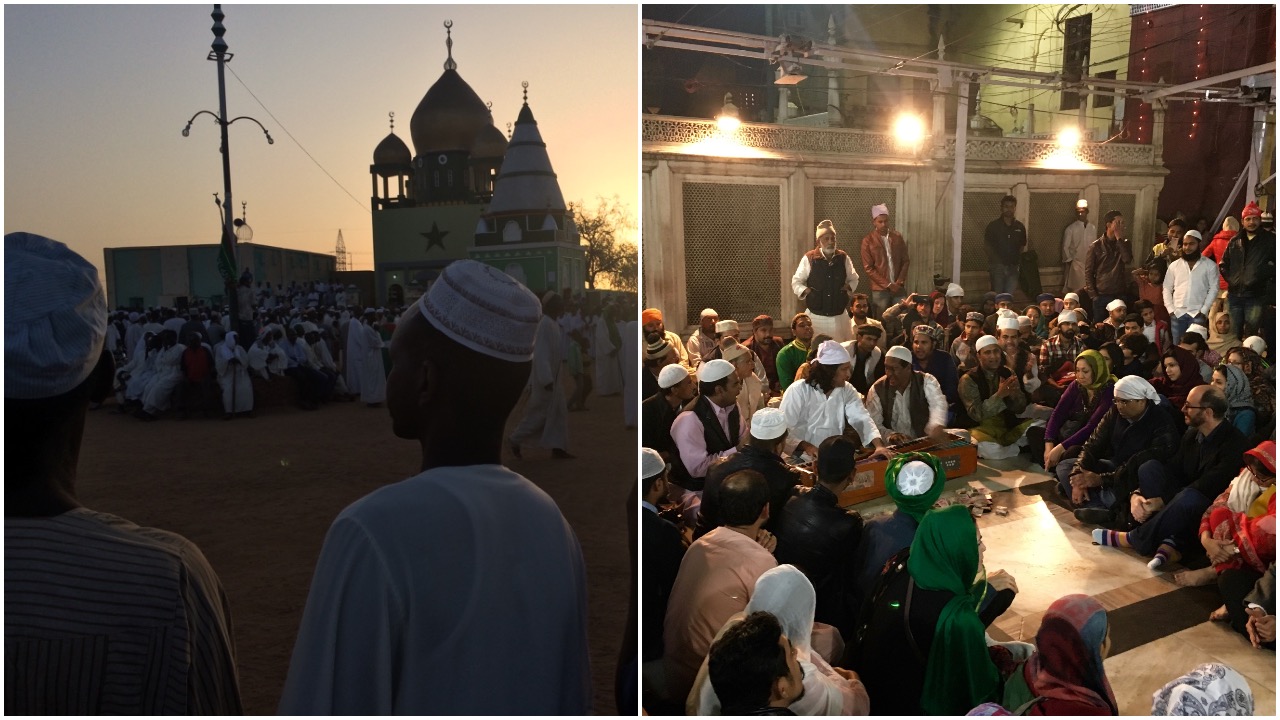
Destination Sufi: Omdurman and Nizzamuddin
The capitals of Sudan and India are not often thought of as must-see tourist destinations. Delhi is all too often just an entry point for tourists visiting India. And Khartoum, well, Sudan’s capital is after all… in Sudan, which is not high on tourism bucket lists either.
People are missing out. Delhi is a delightfully insane patchwork of vibrant communities and leftovers of ancient empire(s) all stuffed together in a frenetic megacity. Khartoum is actually a peaceful and calm oasis on the Nile, with some of the friendliest human beings I have ever encountered. I’ve greatly enjoyed visiting and working in both cities over the past few years.
And interestingly enough, at the top of the to-do lists for visitors to both of these cities are very similar cultural attractions: Sufi shrines that feature the rhythmic devotional music so typical of this mystical branch of Islam.
A trip across the Nile from Khartoum to see the whirling dervishes of Omdurman is a must for the few visitors to this city. In Delhi, checking out the Thursday night Sufi Qawwali singing at Nizzamudin is one of the most unforgettable experiences that the city has to offer. I’ll let my video from December 2016 prove the point:
Although both sites attract some tourists, the vast majority of visitors are adherents of the Sufi branch of Islam. Unsurprisingly, there are a number of similarities between the Sufi two sites. Both are located at tombs of important Sufi leaders. The singing and dancing at both sites happens once a week, at sundown. And both sites serve a larger spiritual purpose for Sufis, making a visit to one a real, enriching experience.
Qawwali Time at Hazrat Nizamuddin
Nizzamudin is located in posh South Delhi but stands out enormously from its surroundings. It is a tiny medieval village of shrines, mosques, mausoleums, kebab joints, and Islamic shops that has grown around the tomb of the 14th Century Sufi saint Hazrat Nizamuddin. Arguably the most important Indian Sufi saint, the Shaikh Nizzamudin believed in the power of mysticism and was a proponent of the power of music and poetry to move people closer to God.
Centuries later his followers are doing just that. Every Thursday huge crowds gather at the Shaikh’s tomb, navigating a series of alleyways and tightly packed streets to reach the shrine. The alleys get smaller and smaller as you get closer to the Dargah, Persian/Urdu for “Shrine.” Every inch is covered by vendors hawking rugs, Islamic goods, oils, and plates of flower offerings. Pilgrims crowd into a small courtyard in front of the shrine, eagerly awaiting the arrival of the Qawwali musicians.
Eager indeed: My first attempt at seeing music there was a bust- we waited over an hour before the musicians decided that they weren’t going to play. My second visit late last year was successful. The second I emerged from the labyrinth into the courtyard, I knew my ethnomusicologist heart wasn’t going to be broken again as the sounds of Qawwali drifted through the crowd.
Qawwali is practiced throughout South Asia, from Pakistan to Bangladesh. The late, great Nusrat Fateh Ali Khan from Pakistan popularized the style among Western audiences:
What really struck me at Nizzamuddin was the diversity of the audience – a perfect microcosm of India’s complex multi-faceted society. Sikhs, Hindus, Buddhists were all there to pay tribute to the Shaikh and take in the Qawwali. The songs were primarily in Punjab and according to my friends, some of the melodies were in fact popular Bollywood tunes with lyrics changed around. I noticed Sikhs praying right next to Muslims. India really is incredible:

The Whirling Dervishes of Hamed al-Nil Tomb in Omdurman
In Omdurman, Sudan, the ceremony takes places every Friday, outside the tomb of the 19th Century Sufi leader Sheikh Hamed al-Nil. The shrine is located inside a dusty cemetery on the outskirts of Omdurman, Sudan’s capital in the 19th century.

